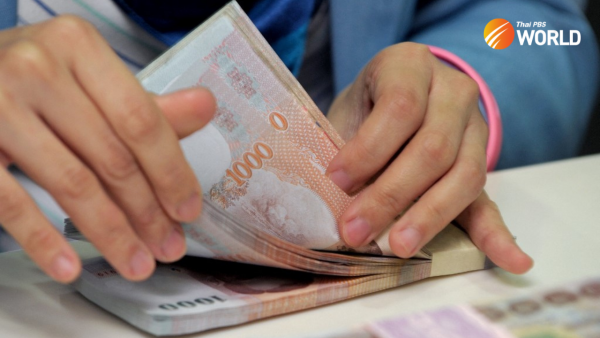China and its hi-tech showcases

The current coronavirus outbreak which has claimed more than 1,300 lives in China so far has certainly diverted attention from what Beijing wants the world to appreciate – the advances in technology and science the country is making making.
Gone are the days that China tried to hide its strength or bide its time – as its former paramount leader Deng Xiaoping once advised.
On the contrary, China wants the world to know that it intends to take centre stage in all important fields, especially in high technology. And that message was clear during a recent extensive tour of a string of science, hi-tech and innovation centres by a group of journalists from several countries along the route of the Belt and Road Initiative.
The trip took place only weeks after China launched the blueprint for an ambitious development plan for the Yangtze River Delta. The Yangtze plan covers Shanghai and the three neighbouring provinces of Jiangsu, Zhejiang and Anhui, which together make up the most densely populated – and most affluent region – in China.
According to China Daily, as one of China’s most economically active, open and innovative regions, the Yangtze River Delta boasts strategic significance in the country’s modernization and further opening-up, which makes its regional integration crucial for leading the country’s high-quality development and building a modern economic system.
Smart cars
A visit to Shanghai Lingang Intelligent Connected Vehicle Integrated Testing Demonstration Zone certainly gives a good impression of how advanced China’s development of smart cars is. Located about 60 kms from the city of Shanghai, it is designed to be “land, sea and air” self-driving comprehensive testing area for intelligent connected vehicles
The demonstration area has 26.1 kilometers of open test road and a closed testing area of 4.7 square kms which has the country’s longest tunnel as well as roads that have rain and fog simulation. The Lingang center, which is still in the experimental stage, is fully equipped with 4G and 5G networks, making it one of the largest in terms of scale and amount of test scenarios.
“And of course, all the technology we use here is made in China,” said a public relations official proudly.
Smart port
The first thing that visitors to Shanghai Yangshan Deepwater Port, one of China’s most important container terminals, would notice is that the vast complex, covering 2.23 million square metres, is void of people. It boasts being the world’s largest automated container terminal. All the loading and unloading as well as horizontal transportation of containers is automated.
That explains why the port needs only 200 people for its workforce. “The automation has reduced the need for workers by as much as 70 per cent,” said a public relations guide.
But that’s not the port’s only outstanding feature. “We have zero emission here,” she said noting that all the operation at the port is electricity-driven.
The port is now in its fourth stage, and once fully operational it will be able to handle to up to 6.3 million TEUs.
“The operation of the port is fully backed up by artificial intelligence systems made in China,” she said.
Innovation valley
A centerpiece of China’s efforts to build an integrated development platform driven by scientific, technological and institutional innovation in the delta is the G60 Science and Technology Innovation Valley. Launched in Songjiang district of Shanghai, the valley connects nine cities that include Shanghai, Jiaxing, Hangzhou, Jinhua, Suzhou, Huzhou, Xuangcheng, Wuhu and Hefei, covering an area of 76,200 square kilometres.
It has seen impressive success in developing industrial clusters, interconnecting infrastructures, promoting collaborative innovation, driving cooperation between brands and industrial parks, integrating industry and finance, to become one of the most dynamic regions in China.
“Innovation is our top priority and Shanghai will become the centre of innovation development,” said one of the G60 executives briefing the visiting journalists.
If “Made in China” is the buzzword now, “Created in China” is the goal with G60 as a main driving engine.
Dream Town
Central to the ambitious plan by China to take a great leap in innovation is the “Dream Town ”, located in the ancient Cangqian town, Hangzhou city. Occupying an area of three square kilometers, the town is the core area of the Future Sci-Tech City where China’s internet icon Alibaba is located, and is designed to be a new model for makerspaces and a high ground of China’s internet entrepreneurship that would rival the US Silicon Valley.
At least 3,000 talents from dozens of countries are now working on projects in the town, each enjoying generous support of up to three years each. It offers everything that a so-called dream town should have – state-of-the-art facilities, recreation areas, schools, hospitals and even shopping malls. Its long and renowned history is maintained through traditional building designs and environment.
An atmosphere of entrepreneurship enthusiasm was visible to the visiting journalists with young talents busy working on new would-be innovations. A young US-educated Chinese showed off her work on a new distributed waste management system to the visitors.
With the support from Dream Town, she is hopeful that she will be able to put the innovation into commercial use in the near future
“Win-win cooperation”
China always want to portray its trade and cooperation with other countries as something being mutually beneficial. One message to the visiting journalists was that China wants others to enjoy the fruit of its success as well.
The Greenland Global Commodity Trading Hub or better known as “G-Hub” is showcased as a demonstration of China’s opening up of its market to the rest of world. Sitting right across the National Exhibition and Convention Centre in Shanghai, G-Hub occupies a floor area of 110,000 square metres where products from across the world, especially those from the Belt and Road countries, are displayed in pavilions and exhibition booths.
A Thai pavilion displaying a large variety of products ranging from rice and other food stuffs to latex pillows and other household items occupy a prominent spot in the hub. “Chinese people find Thai products to be exotic,” said Tony Chen who looks after the Thai Pavilion, noting that as Chinese people become more affluent they have developed a penchant for foreign products.
G-Hub said it helps with promoting and strategic planning for these foreign products to reach Chinese markets.
Like G-Hub, the Ningbo Import Commodities Exhibition Center in Ningbo, a major port and industrial hub in Zhejiang, also offers a one-stop service to help with import and marketing of products from central and eastern Europe and other countries.
Though there is a large appetite among Chinese people for imported goods, language and sales channels are still a major barrier. Exhibitors said services from such organizations as G-Hub and Ningbo commodities center are, therefore, very helpful.
Robotics
Facilities at Suzhou Victory Precision Manufacture Co Ltd in the province of Jiangsu, are a good manifestation of the level of robotization of Chinese industry. The company stands out as a showcase of how Chinese industries have transformed themselves from traditional manufacturing to intelligent manufacturing. The company’s robots now churn out smart phones, LED batteries and computer-related components to a wide range of world-class customers that include Samsung, Foxconn, Huawei and Apple.
The company, which counts itself as one of the top Chinese investors in Europe, is now touted as another of China’s success stories in robotics. Simon Zhang, the company’s executive vice president, said the company is involved with its clients starting from the research and development stage.
Robotization also means a much leaner workforce. And if fewer people are required to work on the factory floor, the need for lighting is minimum – and thus a drastic cut in electricity bills.
And it’s obvious that what Simon Zhang is most proud is that the entire manufacturing system was also designed and made in China. For him it’s important to take notice that it’s Chinese technology that has brought the company to the forefront of the global market.
With the technological and scientific advance China has made over the years, it’s no wonder why those in the hi-tech industry in Yangtze River Delta are full of confidence about the country’s place in the world.
And it was an executive of the G60 Science and Technology Innovation Valley who best summed up the mood when he said: “’We are confident that China will become not only an economic power, but also a technological power.”






